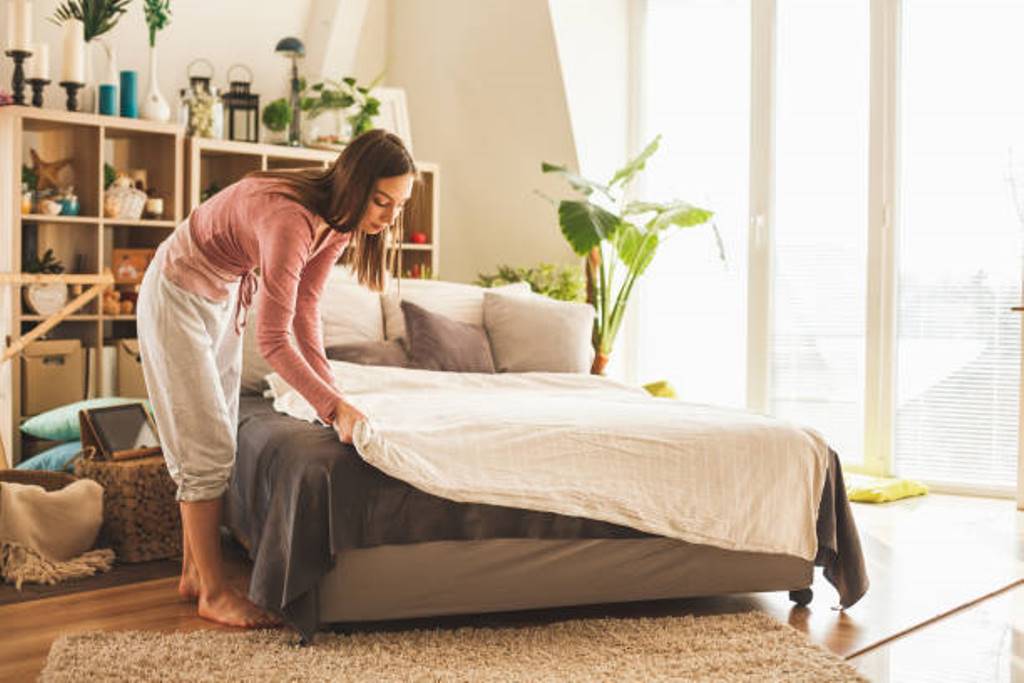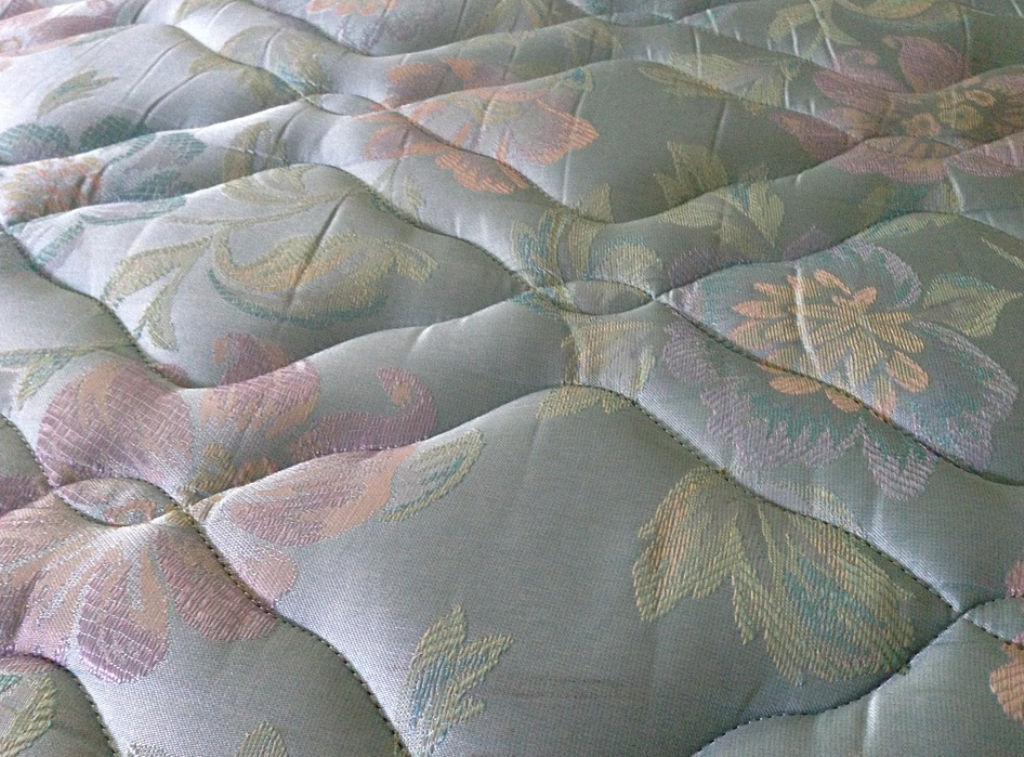For a surface humans are supposed to spend between a quarter and a third of their lives on, the bedroom mattress doesn’t get as much cleaning attention as floors, or even couches and sofas. But mattresses deserve at least as much hygienic care as any other household item, even more.
“Even if you have a mattress pad on your bed,” according to OrthoMattress, “the mattress still requires cleaning because dust mites, body oils, sweat, dead skin and other residues from pets and children get through to the mattress through the pad. The fabric used on mattresses isn’t always designed to be stain-resistant as a mattress is always covered, unlike carpets, rugs, or upholstery.”
Cleaning a mattress is key in maintaining the air quality of your bedroom and surrounding areas and can go a long way in managing common household allergies. With this easy-to-follow, step-by-step procedure, the prospect of taking care of this big piece of furniture can be much less intimidating.
Supplies You’ll Need
To start, gather all your cleaning supplies:
- A vacuum cleaner, with a couple of attachments.
You’ll need the upholstery attachment, which is the flat-shaped, vertical one with the bristles along the suction area. Get out your crevice attachment—the long tube that resembles an anteater’s snout—as well.
- Washing solution liquids.
Dish soap or mild detergents should be fine, although we also mention a few alternatives below. You’ll also be wise to invest in enzyme cleaner for biological stains.
- An empty liquid spray bottle.
- Baking soda. Any of the most popular brands will do.
- Cloths or rags reserved for washing.
- Cold water in a bowl.
Strip down your bed
Take all the blankets, sheets, pillows, and pillowcases off your mattress. If you have a mattress with box springs, take off all the covers and pads as well. Whichever items are machine-washable can go in your washer, cleaned according to the manufacturer’s directions.

On memory foam mattresses, even if the cover is described “removable,” it’s usually too difficult to get back on—so leave it. You’ll use the following directions to wash your cover.
Vacuum your mattress
With all linens removed, give your mattress a sweep with the vacuum using the upholstery attachment, making sure to clean both the surface and sides. Your crevice attachment is especially handy for getting all the matter between the seams around the edge of your mattress.
Prepare your cleaning solution
For the liquid cleaning solution, you have a few options. Diluting the dish soap or liquid detergent with water should do the trick—use 2 parts water to 1 part soap. Fill your empty spray bottle with the solution.
If you have some especially tough stains, a solution of 4 parts water to 1 part distilled white vinegar may be helpful. Alternately, you can use a solution of hydrogen peroxide, dish soap, baking soda, and water, but be especially careful since hydrogen peroxide acts as a bleach. Some also use lemon juice mixed with salt, which will require you to wash off the salt after about an hour. In most cases, though, the simple blend of dish soap and water will suffice.
For biological stains like blood, sweat, bodily fluids, wine, coffee, or others, use the enzyme cleaner in combination with your liquid soap solution. Follow the manufacturer’s directions exactly, and only use it to treat specific stains.
Spot-clean the stains
Locate the stains on your mattress and spot-clean each one with your liquid washing solution. This step is probably the most focus-heavy of all, but make sure you spend some quality time on it.
Spray your cleaning solution onto your washing cloth and blot the stained area. Finally, dip another cloth into the plain, cold water, and blot the area until it’s fully clean.
Remember not to soak your mattress with excessive liquid or apply untreated washing fluid directly upon it. That’s especially important for memory foam mattresses, which aren’t made to retain any moisture.
Sprinkle baking soda over your mattress
Baking soda is almost like a magic powder for removing odors, even the ones that accumulate over time on your mattress. The best method is to put the baking soda in a kitchen sifter and tap it to dust over all areas of your bed, sort of like how one sprinkles powdered sugar on a very large cake.
At this point, take a break, walk away and let the baking soda do its work. A minimum of 30 minutes is recommended, but the more time you can leave it on, the better. Some might want to do this stage before they leave for an overnight trip—that’s certainly appropriate.
Re-vacuum your mattress
Of course, now that your mattress is covered in baking soda, you need to re-vacuum it. You can use the upholstery attachment if you wish, but if your vacuum’s suction is strong enough you may get by on just the straight tube. Whatever you use, sweep up all the grains of soda.
Air out your mattress
If it’s physically possible, it’s best to air your mattress outside if you can get it there. But if you don’t have an easily moveable mattress in dry weather conditions, simply open the windows in the bedroom for an hour or so. Exposure to sunshine helps tremendously since UV rays attack whatever bacteria’s left on the mattress.
Flip or rotate the mattress
Most bed makers suggest flipping your mattress every three months, especially if they employ springs while you sleep. Flipping helps re-distribute the pressure and even out your mattress after an extended time in the same position. If you don’t have a mattress that can be flipped easily (or isn’t intended to be flipped), just rotate it at least 180 degrees.
Of course, you might want to clean your new mattress top, in which case you can repeat all the above steps at this point.
Put on a mattress protector and make the bed

Seriously consider getting a mattress protector if you don’t already have one. It’s a very thin cover that goes over your mattress, and it makes future cleanings much, much easier. Many commercially available mattress covers are also hypoallergenic, and any of them can extend the life of your mattress.
Replace the mattress protector at this stage, and finish making up your bed with your pillows, sheets, blankets, and other supplementary furnishings.
Though the effort may seem daunting from afar, taking these practical, easy-to-execute steps every few months will pay back in comfort, sanitation, and overall tranquility—even when you’re not asleep.






